
Informational Interview with Dr. Margaret Woodhouse: Computational biologist and sequence curator at MaizeGDB
Profiles of Plant ScientistsInformational Interview by Samantha Snodgrass, ASPB Conviron Scholar 2020
Margaret Woodhouse is a computational biologist and sequence curator at the Maize Genetics and Genomics Database, MaizeGDB, which is a part of the United States Department of Agriculture, USDA. We talked about her journey to…
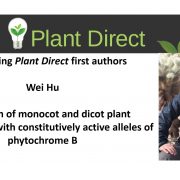
Recognizing Plant Direct authors: Wei Hu
Plant Direct, Plant Direct: Author ProfilesWei Hu, first author of Regulation of monocot and dicot plant development with constitutively active alleles of phytochrome B
Current Position: Assistant project scientist at Prof. J. Clark Lagarias’ Laboratory, Department of Molecular and Cellular Biology, University of California Davis, USA
Education:
PhD,…
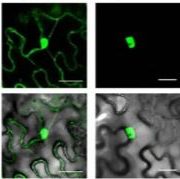
Tuning to the signal of stress: sub-cellular regulation of abscisic acid receptor abundance by E3 ubiquitin ligases
Plant Physiology, Plant Physiology: News and Views, ResearchMagdalena M. Julkowska
[email protected]
Developmental and environmental changes are communicated systemically throughout the plant by various signals, ranging from electric currents to plant hormones. As the responses elicited by the systemic signals depend on the tissue…
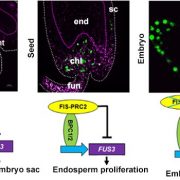
Repression of FUSCA3 by BASIC PENTACYSTEINE PROTEINS promotes ovule development and coordinates embryo and endosperm growth
Research, The Plant Cell, The Plant Cell: In a NutshellWu et al. found that FUSCA3, which regulates seed development, is localized to specific cells of the ovule and seed coat and is itself regulated by BASIC PENTACYSTEINE (BPC) proteins. Plant Cell https://doi.org/10.1105/tpc.19.00764
By Sonia Gazzarrini (University of Toronto, Dept. Biological Sciences…
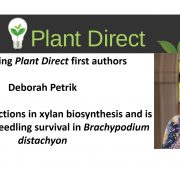
Recognizing Plant Direct authors: Deborah Petrik
Plant Direct, Plant Direct: Author ProfilesDeborah Petrik, first author of BdGT43B2 functions in xylan biosynthesis and is essential for seedling survival in Brachypodium distachyon
Current Position: Visiting Assistant Professor of Biology, Rhodes College, Memphis, TN
Education:
PhD in Biological Sciences, Illinois State University, 2015
M.S.…
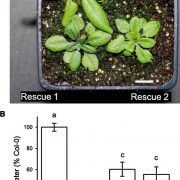
Certain Flippases Are Important for Vegetative Growth
Plant Physiology, Plant Physiology: On The InsideLipid flippases hydrolyze ATP to flip lipids across a membrane bilayer toward cytosolic facing leaflets, whether that be from the outer leaflet of the plasma membrane (PM) or luminal leaflet of internal membranes. Flippases are proposed to be involved in multiple processes, such as flipping specific…

Cytokinin signaling patterns maize leaves, otherwise things get hairy and frayed
Research, The Plant Cell, The Plant Cell: In a NutshellVariation in leaf morphology across the angiosperms is impressive and abounds. Leaves are the primary photosynthetic organ for most angiosperms, acting as the primary sites of light capture and gas exchange. Typical of grass leaves, maize leaves are strap-like and simple, with unelaborated margins. Leaves…
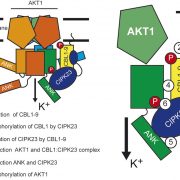
Regulation of a K+ Channel A by Phosphorylation
Plant Physiology, Plant Physiology: On The InsidePotassium (K+) serves important roles in plants for the control of cellular pH, regulation of membrane electric potentials and cell turgor, and as a cofactor in essential metabolic processes including protein synthesis. Plasma membrane voltage-gated K+ channels are crucial for K+ uptake, release, and…
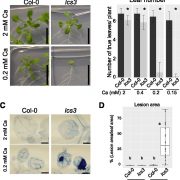
Callose Suppresses Low Calcium-Induced Cell Death
Plant Physiology, Plant Physiology: On The InsideCalcium (Ca) deficiency symptoms often occur in crops because Ca is mainly translocated by the transpiration stream, and conditions that affect transpiration can cause Ca deficiency. Because Ca is translocated via the transpiration stream, it tends to accumulate more in older, expanded leaves and less…

